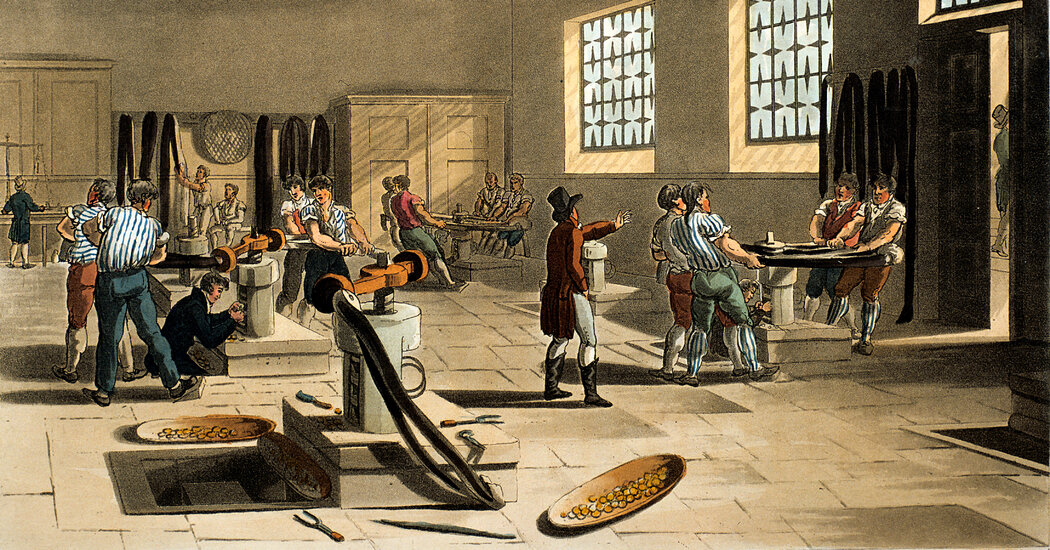I had some fun yesterday with a tweet by Josh Mandel, the would-be MAGA senator from Ohio, who has declared his allegiance to fundamental American values: God, family and Bitcoin. I didn’t have space to go on about some of the things he has said about Bitcoin, which really is at the center of his campaign. But I was struck in particular by this tweet from October, in which he appears to assert that fiat money (dollars aren’t backed by anything except their official role as legal tender, and dollars can be created at the discretion of appointed officials at the Fed) is a crucial enabler of inflationary spending:
The faster everyday Americans adopt #bitcoin as their savings account, the faster it becomes impossible for Biden and the Spendocrats to inflate away the value of their savings.
Make Saving Great Again!
— Josh Mandel (@JoshMandelOhio) October 2, 2021
Mockery aside, is there any truth to that assertion? Has the U.S. government relied on the printing press to cover deficits and thereby fed inflation?
It’s not an absurd notion in principle. Money-financed deficits, sometimes leading to extreme inflation, have happened in other times and other places. In fact, excessive reliance on the printing press is how hyperinflation happens. And maybe it’s worth laying out how that works, if only to contrast with what’s actually happening in America in 2022.
The story of hyperinflation goes like this: You have a government that can’t borrow and can’t collect enough in taxes to cover its expenses. So it turns to the printing press, simply issuing money to pay its bills. This money issuance causes rapid growth in the money supply, which leads to high inflation.
High inflation, however, turns money into a hot potato people want to get rid of as quickly as possible, so the velocity of money — the rate at which it turns over — shoots up, which drives prices up even more. The problem is that as the value of money declines, the government has to print even more — in fact, has to increase the money supply at an even faster rate — in order to cover its deficits. This leads to even faster inflation, which leads to further rises in velocity, and the whole thing spirals into chaos.
The thing is, everyone understands this story, so hyperinflations happen only when governments are very weak — usually during or just after disastrous wars or revolutions. That’s not the situation in America now; in fact, investors are practically begging the government to take their money, with real interest rates on federal debt significantly below zero.
Still, the U.S. government does cover some of its bills by issuing new currency — a process known by the old-fashioned term “seigniorage,” derived from the ancient tradition in which monarchs charged a fee for minting gold or silver into coins. So how big a deal is seigniorage in modern America?
That’s actually a slightly trickier question to answer than you might think. When people talk about the money supply, they’re usually referring to a measure that includes bank deposits, which aren’t created by the government. Historically, we used to measure seigniorage by the annual increase in the monetary base — currency in the hands of the public, plus the reserves banks were required to hold. Since the 2008 financial crisis, however, banks have been voluntarily holding vast excess reserves, apparently because they don’t see enough good lending opportunities — and the Fed has been paying interest on these reserves, which makes them more like government debt than money the private sector was forced to accept.
My take is that it’s best to focus just on currency — pieces of green paper bearing pictures of dead presidents — which made up 98 percent of the monetary base before the crisis. So how much new currency has the U.S. government been putting into circulation? Over the course of 2021, the answer is about $150 billion — actually down from the last year of the Trump administration:
That’s not a lot. I know, $150 billion here, $150 billion there, and eventually you’re talking about real money. But it’s a small fraction of the budget deficit, let alone the economy as a whole.
Oh, and to the extent that we are implicitly taxing people by getting them to accept green paper instead of gold or Bitcoin, who, exactly, is being taxed? As I noted in a recent column, more than 80 percent of the value of dollars in circulation consists of $100 bills:
We don’t know exactly who’s holding those bills, but I don’t think it’s mainly working-class Americans sitting in diners. And a significant fraction is probably held by foreigners; printing money for foreigners who want to hide their wealth and their activities from their governments is a significant U.S. export, albeit not an especially honorable one.
So, no, ordinary Americans aren’t being impoverished by a government that is abusing the power of the printing press. The inflation of 2021 was painful, although we can argue that accepting it was better than the alternatives. In any case, careful analysis says that asserting that none of this would have happened if we had been using Bitcoin is as silly as it sounds.
Quick Hits
How many dollars are overseas, anyway? It’s complicated.
El Salvador is officially on a Bitcoin standard. It’s not going well.
Welcome to Cryptoland. Apparently not a parody.
Conspiracy theory economics.
Facing the Music
The taxman keeps the seigniorage away.


























